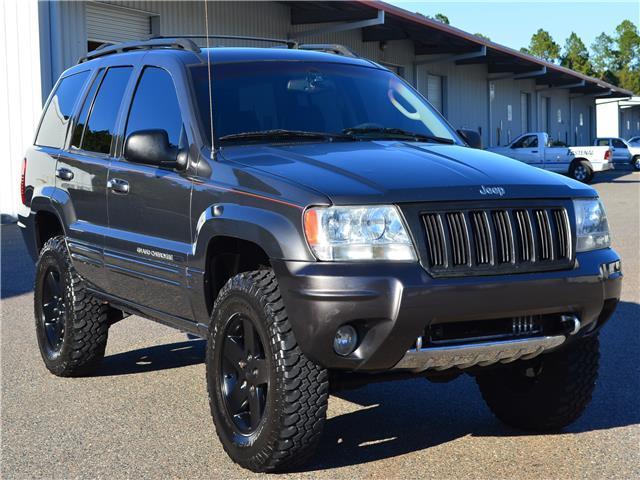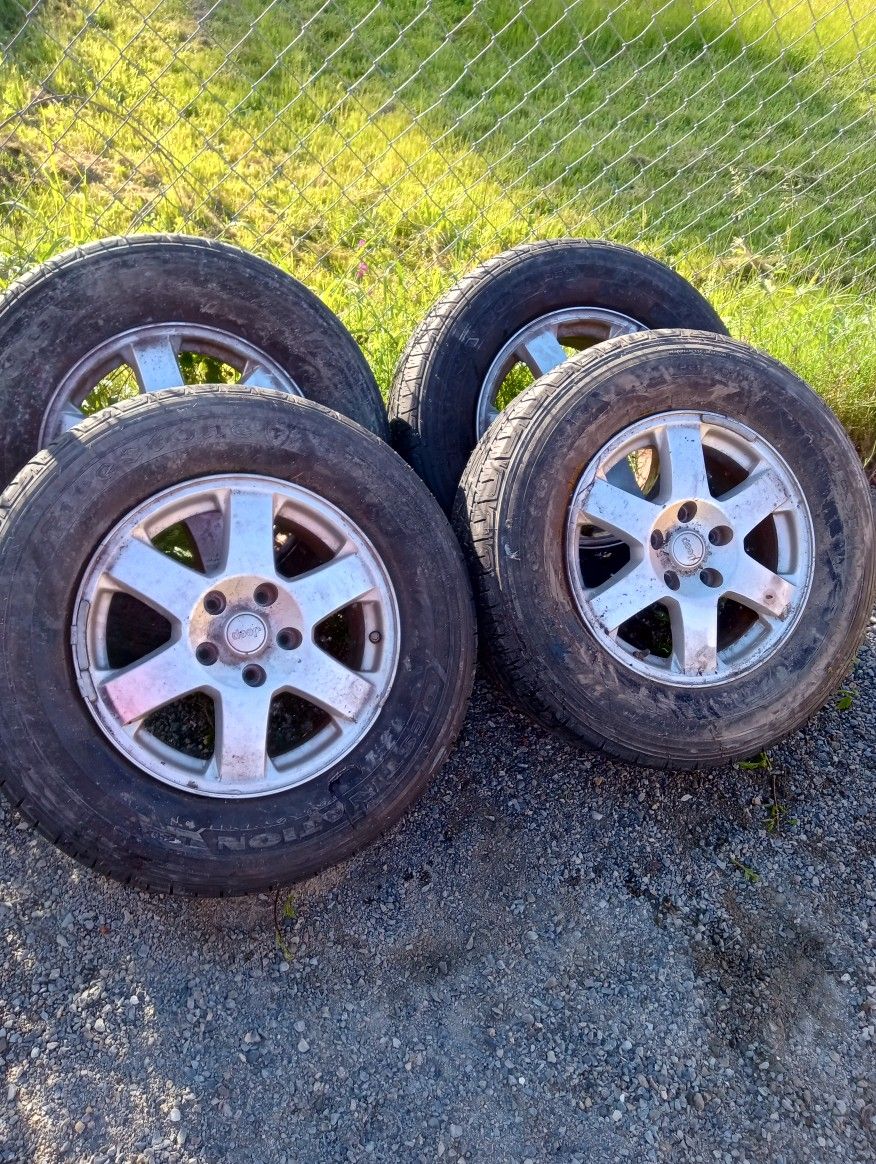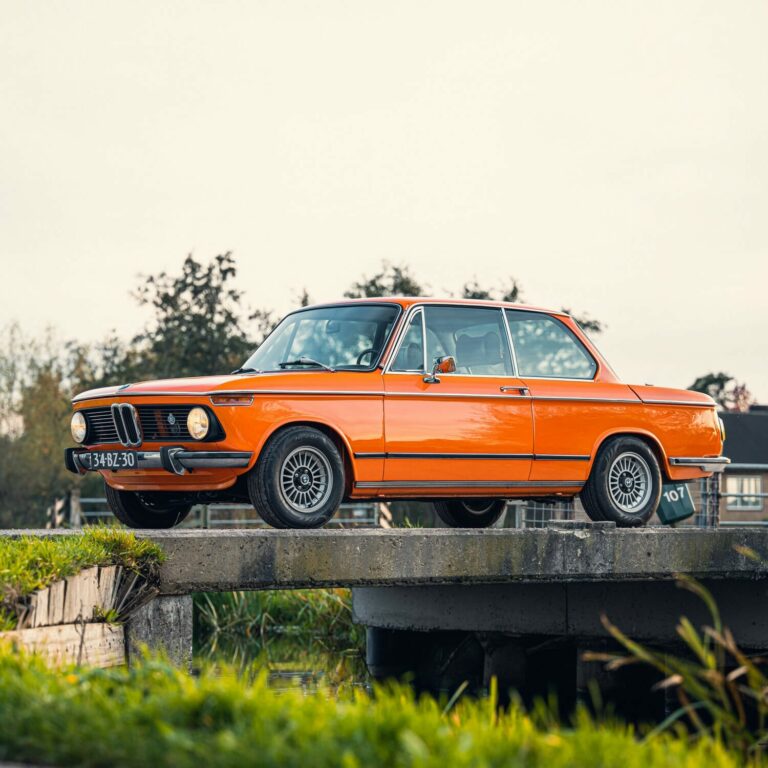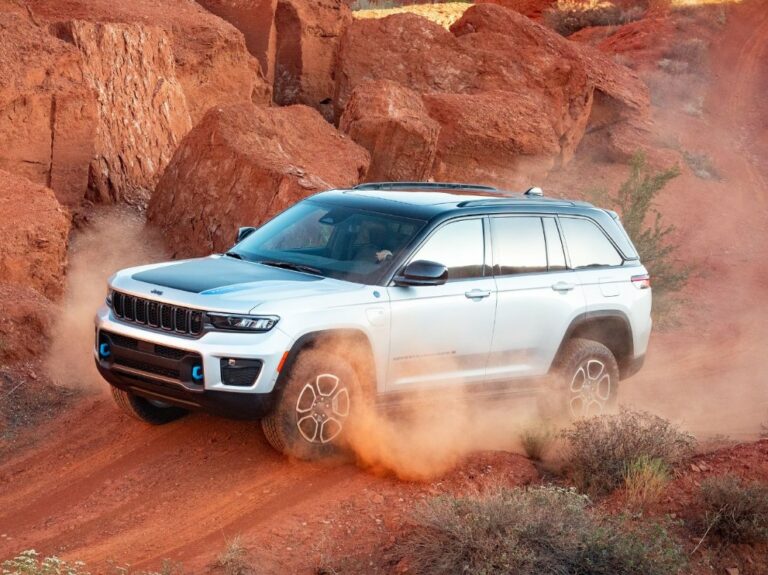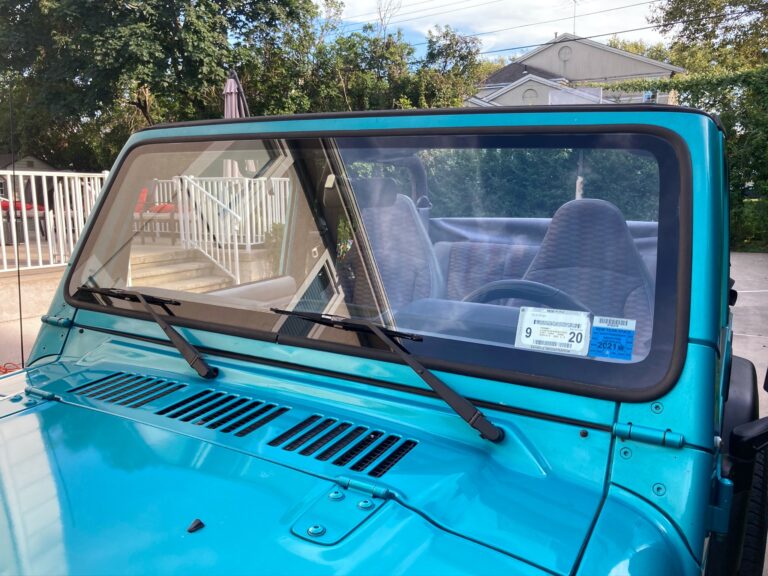Jeep WJ Wheels For Sale: A Comprehensive Buyer’s Guide
Jeep WJ Wheels For Sale: A Comprehensive Buyer’s Guide jeeps.truckstrend.com
The Jeep Grand Cherokee WJ (1999-2004) holds a special place in the hearts of many enthusiasts. Known for its robust unibody construction, capable Quadra-Trac II and Quadra-Drive systems, and a blend of ruggedness with comfort, the WJ remains a popular choice for daily driving, overlanding, and serious off-road adventures. While the WJ is inherently capable, one of the most transformative upgrades you can make, both aesthetically and functionally, is changing its wheels.
"Jeep WJ Wheels For Sale" is more than just a search query; it’s an entry point into a vast world of options that can dramatically alter your vehicle’s appearance, improve its off-road prowess, or simply replace worn-out stock components. From enhancing clearance for larger tires to personalizing your Grand Cherokee’s stance, the right set of wheels is crucial. This comprehensive guide will navigate the complexities of buying wheels for your WJ, ensuring you make an informed decision that perfectly suits your needs and budget.
Jeep WJ Wheels For Sale: A Comprehensive Buyer’s Guide
Understanding Your Jeep WJ’s Wheel Specifications
Before you even begin browsing "Jeep WJ wheels for sale," it’s paramount to understand the fundamental specifications that dictate what will fit your vehicle. Getting these wrong can lead to compatibility issues, rubbing, or even unsafe driving conditions.
- Bolt Pattern (PCD – Pitch Circle Diameter): This is arguably the most critical specification. The Jeep Grand Cherokee WJ universally uses a 5×4.5-inch (or 5×114.3mm) bolt pattern. This means there are five lug holes, and the circle on which they are arranged has a diameter of 4.5 inches (or 114.3mm). Any wheel you consider must match this pattern precisely. Do not attempt to force a wheel with a different bolt pattern; it is dangerous and can lead to wheel stud failure.
- Center Bore: The WJ has a center bore of 71.5mm. This is the diameter of the hole in the center of the wheel that fits over the hub of your vehicle. Ideally, the wheel’s center bore should match or be slightly larger than the hub bore. If the wheel’s center bore is larger, you’ll need hub-centric rings to ensure the wheel is properly centered on the hub, preventing vibrations. If it’s smaller, the wheel simply won’t fit.
- Offset and Backspacing: These two measurements describe how far the wheel sits relative to the mounting surface.
- Offset: Measured in millimeters, offset is the distance from the wheel’s mounting surface to the wheel’s centerline.

- Positive Offset: The mounting surface is towards the front (outside) of the wheel’s centerline. This pushes the wheel further inward towards the suspension and body. Most stock WJ wheels have a positive offset (e.g., +30mm to +50mm).
- Negative Offset: The mounting surface is towards the back (inside) of the wheel’s centerline. This pushes the wheel further outward from the vehicle. This creates a wider stance and is often desired for larger tires and a more aggressive look on lifted WJs.
- Zero Offset: The mounting surface is exactly at the wheel’s centerline.
- Backspacing: Measured in inches, backspacing is the distance from the mounting surface to the rear edge of the wheel. Lower backspacing means the wheel sticks out further.
- Why they matter: For lifted WJs running larger tires (e.g., 31-33 inches), a lower positive or even a negative offset (or lower backspacing) is often necessary to prevent the tire from rubbing on suspension components (like the lower control arms) or the inner fender liner at full lock or compression. Conversely, too much negative offset can cause tires to rub on the fender flares or bodywork, especially when flexing.

- Offset: Measured in millimeters, offset is the distance from the wheel’s mounting surface to the wheel’s centerline.
- Diameter (Rim Size): Stock WJ wheels typically range from 15 to 18 inches. When upgrading, common diameters are 15, 16, 17, and 18 inches. Keep in mind that larger diameter wheels generally mean lower profile tires, which offer less sidewall for off-roading but can provide better on-road handling and aesthetics. Smaller diameters (like 15-inch) offer more sidewall for airing down and a more comfortable ride off-road, but might not clear larger brake calipers if you’ve upgraded them.
- Width: Stock WJ wheels are usually 7-8 inches wide. The wheel width must be appropriate for the tire width you plan to use. An overly wide or narrow wheel for a given tire can affect tire performance, wear, and safety.

Why Upgrade Your WJ Wheels?
The motivations behind seeking "Jeep WJ wheels for sale" are varied, spanning from purely aesthetic desires to critical functional improvements.
- Aesthetics and Personalization: This is often the primary driver. Aftermarket wheels offer an endless array of designs, finishes (black, chrome, machined, bronze, etc.), and styles that can dramatically change the look of your WJ. Whether you’re aiming for a classic rugged look, a modern stealth build, or a flashy street machine, new wheels can define your vehicle’s personality.
- Accommodating Larger Tires: If you’ve lifted your WJ or plan to, larger tires are often part of the equation. Stock wheels, with their positive offset, will typically cause larger tires to rub on suspension components. Aftermarket wheels with a more suitable offset (less positive or negative) push the tire out, providing the necessary clearance.
- Improved Off-Road Performance and Durability:
- Stronger Construction: Some aftermarket wheels, particularly steel wheels or heavy-duty alloys, are designed to withstand the abuse of off-roading better than stock wheels.
- Better Clearance: Proper offset can improve articulation and reduce the chance of rubbing in challenging terrain.
- Beadlock Capability: For extreme off-roaders, true beadlock wheels allow you to air down tires to very low pressures for maximum traction without the tire bead separating from the rim.
- Weight Reduction (Alloy Wheels): Lighter wheels can reduce unsprung weight, potentially leading to marginal improvements in acceleration, braking, and fuel economy, as well as a more responsive feel.
- Replacement of Damaged/Worn Wheels: Over time, stock wheels can become corroded, bent, or simply worn out. Finding "Jeep WJ wheels for sale" might simply be about replacing a damaged set.
Types of Jeep WJ Wheels For Sale
The market offers a diverse range of wheel types, each with its own advantages and disadvantages.
- OEM/Stock Wheels:
- Pros: Guaranteed fit, designed for the vehicle’s original specifications, often available used at affordable prices, good ride quality.
- Cons: Limited aesthetic options, generally have positive offset that may not accommodate larger tires without spacers, can be heavy if steel.
- Examples: The WJ came with various attractive stock wheels like the "Icon" (16-inch), "Sport" (16-inch), "Limited" (17-inch), and "Overland" (17-inch).
- Aftermarket Alloy Wheels:
- Pros: Enormous variety of styles and finishes, typically lighter than steel, better heat dissipation for brakes, available in a wide range of offsets and backspacing.
- Cons: Can be more expensive, potentially more prone to bending or cracking under severe impact than steel (though modern alloys are very robust), more susceptible to cosmetic damage (scratches, curb rash).
- Popular Brands: Method Race Wheels, Fuel Off-Road, XD Series, Black Rhino, Pro Comp, Vision Wheels, American Racing, and many more.
- Aftermarket Steel Wheels:
- Pros: Extremely strong and durable, often very affordable, easy to repair (can be hammered back into shape), excellent for serious off-roading where impact resistance is key.
- Cons: Very heavy (negatively impacts fuel economy and acceleration), limited style options (typically plain black D-window or spoke designs), prone to rust if the finish is compromised.
- Target User: Budget-conscious buyers, dedicated off-roaders prioritizing strength over weight/aesthetics.
- Beadlock Wheels (True vs. Simulated):
- True Beadlocks:
- Pros: Allow tires to be run at extremely low pressures (e.g., 5-8 psi) without separating from the rim, providing maximum traction on difficult terrain.
- Cons: Very expensive, heavy, require more maintenance (checking bolts), often not DOT-approved for street use in many areas.
- Simulated Beadlocks: Look like true beadlocks but the outer ring is purely cosmetic. They function like regular wheels.
- Pros: Get the beadlock look without the cost or maintenance, street legal.
- Cons: No functional benefit for airing down.
- True Beadlocks:
Where to Find Jeep WJ Wheels For Sale
The hunt for the perfect wheels can take you to various avenues, both new and used.
- New Wheels:
- Online Retailers: Large dedicated 4×4 and off-road shops like Quadratec, ExtremeTerrain, 4 Wheel Parts, Summit Racing, and even Amazon or eBay (from reputable sellers). These offer the widest selection and often competitive pricing.
- Local 4×4/Off-Road Shops: Support local businesses! They can provide expert advice, professional installation, and sometimes offer package deals with tires.
- Tire Shops: Many tire shops also sell and install aftermarket wheels.
- Used Wheels:
- Online Marketplaces: Facebook Marketplace, Craigslist, and eBay are goldmines for used "Jeep WJ wheels for sale." You can often find great deals on OEM take-offs or used aftermarket sets.
- Jeep Forums and Dedicated WJ Groups: Online communities like JeepForum.com or Facebook groups dedicated to the WJ Grand Cherokee often have classified sections where members sell parts. This is a great way to buy from knowledgeable enthusiasts.
- Salvage Yards/Junkyards: You might get lucky and find a clean set of OEM wheels from a wrecked WJ.
- Local Off-Road Clubs: Networking with local clubs can lead to finding used wheels as members upgrade.
Tips for Buying Used Wheels:
- Inspect Thoroughly: Check for cracks, bends, deep scratches, curb rash, or corrosion. Spin the wheel to check for wobbles.
- Ask Questions: Inquire about the wheel’s history, mileage, and why they’re being sold.
- Verify Specs: Double-check the bolt pattern, diameter, width, and especially the offset/backspacing. If the seller doesn’t know, look for markings on the wheel or ask for measurements.
- Beware of "Too Good to Be True" Deals: Extremely low prices might indicate significant damage.
Important Considerations When Buying
Beyond the basic specifications, several factors should influence your final decision.
- Your Tire Size and Lift Kit: These are symbiotic. If you have a 2-inch lift and plan to run 31-inch tires, you’ll need a different wheel offset/backspacing than if you have a 4-inch lift and want 33-inch tires. Research common setups for your desired tire size and lift height.
- Intended Use:
- Daily Driver: Prioritize aesthetics, comfort, and perhaps lighter weight for fuel economy.
- Light Trails/Overlanding: Focus on durability and a good balance of on-road comfort and off-road capability.
- Heavy Rock Crawling: Strength, reparability (steel), and potentially beadlock capability become paramount.
- Budget: Wheels can range from under $100 per wheel for used OEM or new steel to several hundred dollars per wheel for premium alloys or beadlocks. Set a realistic budget that includes the cost of mounting, balancing, and potentially new lug nuts.
- Lug Nuts: Aftermarket wheels often require specific types of lug nuts (e.g., conical seat, spline drive) that differ from OEM lug nuts. Factor these into your budget.
- TPMS (Tire Pressure Monitoring System): While newer Jeeps use in-wheel TPMS sensors, the WJ (1999-2004) typically uses an indirect TPMS system that relies on ABS wheel speed sensors to detect a difference in tire rotation, rather than sensors inside the wheels. Therefore, you generally won’t need to worry about TPMS sensor compatibility when buying new wheels for a WJ.
Installation and Maintenance Tips
Once you’ve acquired your new "Jeep WJ wheels for sale," proper installation and ongoing maintenance are key to their longevity and your safety.
- Professional Installation: While you can mount tires and wheels yourself, professional mounting and balancing are highly recommended. Proper balancing is crucial for a smooth ride and to prevent premature tire wear.
- Torque Specs: Always torque your lug nuts to the manufacturer’s recommended specifications (usually around 95-110 ft-lbs for a WJ). Use a torque wrench and follow a star pattern.
- Re-torque After Driving: After driving approximately 50-100 miles on new wheels, re-torque your lug nuts. This ensures they’ve seated properly and haven’t loosened.
- Regular Cleaning: Especially for alloy wheels, regular cleaning prevents brake dust and road grime from corroding the finish. Use appropriate wheel cleaners and avoid harsh chemicals.
- Wheel Alignment: If you significantly change wheel offset or tire size, a wheel alignment is a good idea to ensure proper steering geometry and tire wear.
Price Table: Jeep WJ Wheels For Sale
| Category | Typical Price Range (Per Wheel) | Pros | Cons | Target User |
|---|---|---|---|---|
| Used OEM/Stock Wheels | $40 – $100 | Affordable, guaranteed fit, good for replacements | Limited styles, typically higher positive offset | Budget-conscious, stock replacement, daily driver |
| New Steel Wheels | $60 – $120 | Very strong, durable, affordable, easily repaired | Heavy, limited styles, prone to rust | Budget-conscious, heavy off-roading, utilitarian |
| New Aftermarket Alloy (Budget) | $120 – $200 | Wide style variety, lighter than steel, good value | May not be as strong as premium alloys | General upgrades, light off-roading, aesthetics |
| New Aftermarket Alloy (Mid-Range) | $200 – $350 | Excellent balance of style, strength, and weight | Higher investment | Enthusiasts, moderate off-roading, performance |
| New Aftermarket Alloy (Premium) | $350 – $600+ | Top-tier designs, advanced manufacturing, very strong | Significant investment | High-performance builds, specific brand loyalty |
| True Beadlock Wheels | $400 – $800+ | Extreme low-pressure capability, maximum traction | Very expensive, heavy, high maintenance, often not street legal | Dedicated rock crawling, extreme off-roaders |
Note: Prices are estimates and can vary based on brand, retailer, condition (for used), and current market demand. This table reflects the price per individual wheel, not a set.
Frequently Asked Questions (FAQ) about Jeep WJ Wheels
Q1: What is the bolt pattern for a Jeep Grand Cherokee WJ?
A1: The Jeep WJ uses a 5×4.5-inch (or 5×114.3mm) bolt pattern.
Q2: Can I put 17-inch wheels on my WJ if it came with 16-inch wheels?
A2: Yes, absolutely. Many WJs came with 17-inch wheels from the factory (e.g., Limited, Overland models). You just need to ensure the overall tire diameter remains appropriate for your suspension setup to avoid rubbing.
Q3: Do I need wheel spacers for my WJ?
A3: Wheel spacers can be used to push wheels out further, often to clear suspension components when running larger tires on stock or mildly offset wheels. However, it’s generally safer and preferable to achieve the desired offset with the wheel itself rather than relying on spacers, especially cheap ones. If you do use spacers, ensure they are hub-centric and of high quality.
Q4: What’s the best offset for a lifted WJ running 31-33 inch tires?
A4: For 31-33 inch tires on a lifted WJ (2-4 inches of lift), an offset in the range of 0mm to -12mm (or backspacing around 4-4.5 inches) is commonly recommended to prevent rubbing on the lower control arms and provide a good stance. However, exact needs vary based on tire width, lift brand, and specific vehicle. Always test fit if possible.
Q5: Are steel or alloy wheels better for off-roading on a WJ?
A5: It depends on the type of off-roading. Steel wheels are heavier but incredibly strong and easy to repair, making them excellent for serious rock crawling where impact is common. Alloy wheels are lighter and offer more style options; modern alloys are very durable and suitable for most trail riding and overlanding.
Q6: How do I check for wheel damage when buying used?
A6: Visually inspect for cracks, especially around the lug holes and spokes. Look for bends or dents on the rim edges. Check for excessive curb rash, which can indicate impacts. Lay the wheel flat on a level surface to check for obvious wobbles. If possible, have a tire shop spin it on a balancer to check for true roundness.
Conclusion
Choosing the right "Jeep WJ wheels for sale" is a pivotal decision that impacts not only your vehicle’s appearance but also its performance, handling, and off-road capability. By understanding the critical specifications, exploring the various types available, knowing where to find them, and considering your specific needs and budget, you can confidently navigate the market.
Whether you’re aiming for a subtle upgrade, a bold statement, or a functional improvement for the trails, the perfect set of wheels awaits your WJ. With careful consideration and a bit of research, you’ll transform your Grand Cherokee into a vehicle that truly reflects your style and conquers any terrain you throw at it. Happy hunting!
